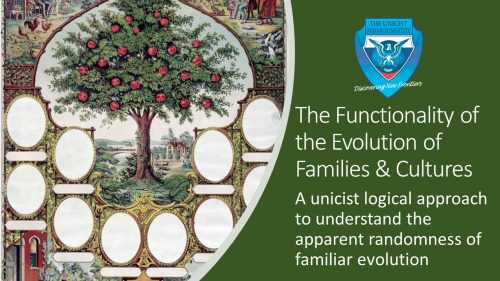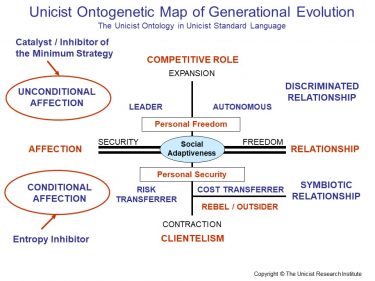The Functionality of the Generational Evolution of Cultures and Families
This information is based on a research work that began in 1976 and is part of the 50-year transgenerational evolution program named “Microeconomics driven Development. It provides access to the functionality of human evolution.
This is not a deterministic approach but a unicist logical approach that allows understanding the apparent randomness of transgenerational evolution. If you take a look at your family, you should be able to identify the functionality described in this document.

Cultural changes occur along multiple generations and are catalyzed by technological changes. The discovery of fire, the wheel and gunpowder are examples of how cultural change is driven and catalyzed by technologies. These changes begin being operational and end being part of the collective intelligence of the culture.
The research made evident that the evolution of people, groups and cultures cannot be forced, it can only be catalyzed using elements included in the restricted context.
Therefore, the introduction of structural changes in cultures requires, necessarily, having a transgenerational approach to evolution. It requires understanding the fundamentals of the behavior of the coming generations to define the framework to introduce structural changes, knowing the need for change that exists and having catalysts that allow sustaining the need for such change.
Evolution is driven by Individual Intelligence and Collective Intelligence
What became evident is that there exist no families that evolve and other families that involve. Different members of a new generation adopt different roles towards evolution, which define their own evolution and influence the evolution of the family as a group.
The collective intelligence of the family and the collective intelligence of the environment strongly influence the evolution of people but do not establish deterministic patterns.
What was found is that adolescence establishes a branch in evolution, which is sustained by the collective intelligence of the restricted and wide contexts and is based on the action guide that children have internalized during their childhood.
This opens multiple structural alternatives that, on the surface, have infinite operational alternatives. The goal of the research was to find the essential drivers of transgenerational evolution to be able to install catalysts in the educational system that foster evolution and minimize the trends towards involution.
There are two possible dominant evolutionary roles that are fostered in a society:
- The Adaptive role, that is driven by the need of personal freedom
- The Over-adaptive role, that is driven by the need of personal security
The adoption of one of them depends on the collective intelligence of the environment of individuals at the time of their adolescent rebellion and on their capacity to deal with the external influences. It has to be considered that the perception of the environment is subjective, which means that two individuals in the same environment, at the same time, might have an “opposite” perception.
Paternalism Inhibits Evolution
Over-adaptive environments organized as groups, organizations or societies tend to develop towards paternalism and clientelism. Paternalism is defined as the system, principle, or practice of managing or governing individuals, businesses, nations, etc., in the manner of a father dealing benevolently and often intrusively with his children.
Paternalism implies clientelism, which implies “buying” the will of people. Political clientelism is the exchange of goods and services for political support.
Paternalism and clientelism naturally generate a subjectivist environment where the subjective relationships prevail over the functional relationships and generate value judgements as a defensive action developed by the clientelism driven people. Paternalism & Clientelism are integrated with Facileness. When this integration becomes stable, facileness becomes an addiction of an individual, group or culture.
Peter Belohlavek
The Unicist Research Institute
NOTE: This research began at The Unicist Research Institute in 1976 and was a parallel process to the research on social evolution, the roots of human intelligence, fallacies, and human learning processes. It included the study of the evolution of people for more than 30 years. The goal was to find the fundamentals that drive evolution and involution and testing the use of different catalysts to evaluate their functionality.

